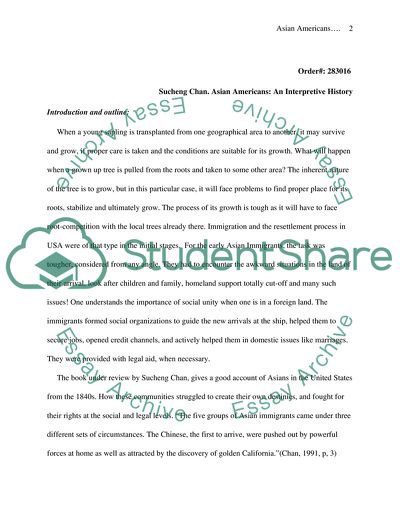Cite this document
(Analysis of Asian Americans: An Interpretive History Book by Sucheng Report/Review Example | Topics and Well Written Essays - 1500 words, n.d.)
Analysis of Asian Americans: An Interpretive History Book by Sucheng Report/Review Example | Topics and Well Written Essays - 1500 words. https://studentshare.org/social-science/1721925-book-review-essay
Analysis of Asian Americans: An Interpretive History Book by Sucheng Report/Review Example | Topics and Well Written Essays - 1500 words. https://studentshare.org/social-science/1721925-book-review-essay
(Analysis of Asian Americans: An Interpretive History Book by Sucheng Report/Review Example | Topics and Well Written Essays - 1500 Words)
Analysis of Asian Americans: An Interpretive History Book by Sucheng Report/Review Example | Topics and Well Written Essays - 1500 Words. https://studentshare.org/social-science/1721925-book-review-essay.
Analysis of Asian Americans: An Interpretive History Book by Sucheng Report/Review Example | Topics and Well Written Essays - 1500 Words. https://studentshare.org/social-science/1721925-book-review-essay.
“Analysis of Asian Americans: An Interpretive History Book by Sucheng Report/Review Example | Topics and Well Written Essays - 1500 Words”. https://studentshare.org/social-science/1721925-book-review-essay.


